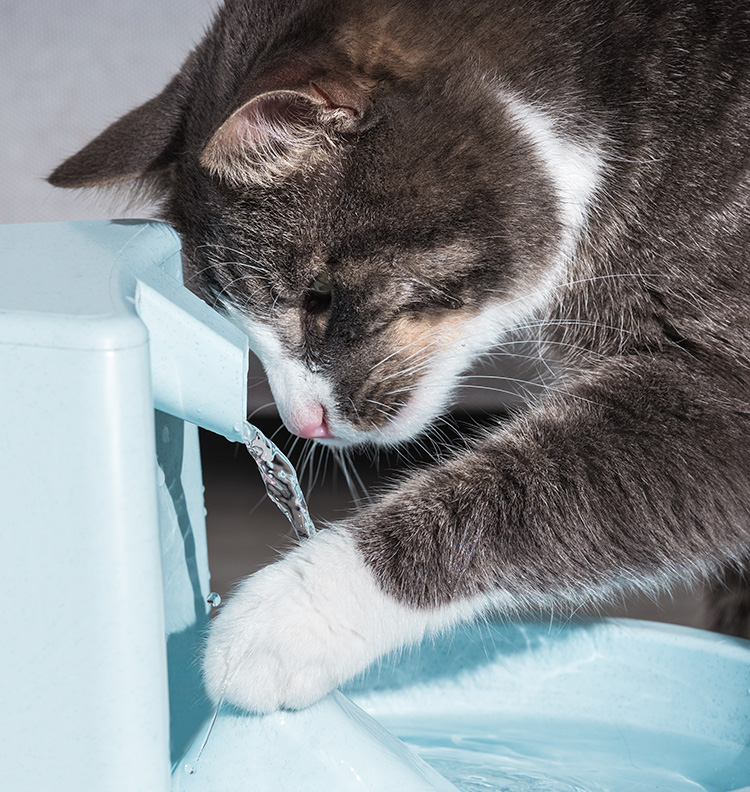
Since cats are attracted to movement and seem to enjoy drinking water from the faucet, it only seemed logical that recirculating water fountains might encourage cats to drink more water. A fabulous idea, right? Yes and no.
The danger from bacterial contamination is a big concern. Harmful bacteria need four things to thrive: water, a source of nutrients, moderate temperatures and time. A pet’s drinking water left standing for more than two days without a thorough cleaning can be potentially harmful to your pet.
Cats often drink water right after consuming food. Small particles of food will fall into their water source. This food not only sustains your cat it will also provide food for bacteria. Cats use their paws to play with the water stream and we all know those paws have spent time in the litter box. If you are using a bowl, it seldom becomes an issue because most people simply change the water daily as a matter of practice.
The water fountain on the other hand is a fairly complicated piece of equipment. They usually consist of a reservoir to hold water, a recirculating pump to move the water, a network of hoses and filters. Although the reservoir of the fountain is generally easy to clean, it is much more difficult to clean the inside of the pump and the connecting hoses. The only surefire way to ensure that bacteria are not living in the pump and hoses is to sterilize it with something like bleach. This requires filling the reservoir with a recommended solution and letting the unit run for 20 minutes. Once the sterilization process is complete, you need to thoroughly flush the entire unit including the pump and hoses with water many times to remove the sterilizing solution. It’s also necessary to prevent your cats access to the unit while cleaning it. It is unlikely that there is any effective way to kill or remove bacteria from the standard carbon filter and we would not recommend using one. If you use a carbon filter it should be changed each time you clean and sterilize the fountain.
Because the bacteria is living in the unit, your cat will get a dose of fresh bacteria every time she takes a drink. Since most pet owners clean the fountain reservoir once in a while they kill off most of the bacteria, but unless the entire unit is sterilized, bacteria will still be present. Receiving a daily dose of potentially harmful bacteria will put additional stress on your cat. Stress both physical and emotional has been linked to UTI issues in cats and should be avoided. Most of the bacteria in our environment are harmless, but bacteria that are allowed to grow unchecked can mutate and become harmful. Keeping your pet dishes and fountains clean, can go a long way to keeping your pets healthy.
Sterilize fountains and water dishes two to three times a week. Food dishes should be changed out no less than once a week. For water, we recommend filtered tap water or spring water. Generally speaking if the water is good enough for you to drink, it is good enough for your pet.
For water, we recommend a neutral pH of 7 and the following types of water. Filtered tap water where the fluoride and chlorine have been removed. Distilled and reverse osmosis (RO) water are devoid of minerals and heavy metals and are considered pure and will benefit adult cats who are no longer growing bone. Distilled and RO water would be particularly good for cats experiencing hypercalcemia or high blood phosphorus levels. Please do not use alkaline water as it could alter your cat’s urine pH negatively. The use of pH modified water should only be considered when your cat’s urine pH is outside of the 6-6.5 pH norm and should be done under veterinary supervision.
You wouldn’t eat off the same plate day in and day out without washing it, so make sure your pet’s feeding area is clean and bacteria free, too.